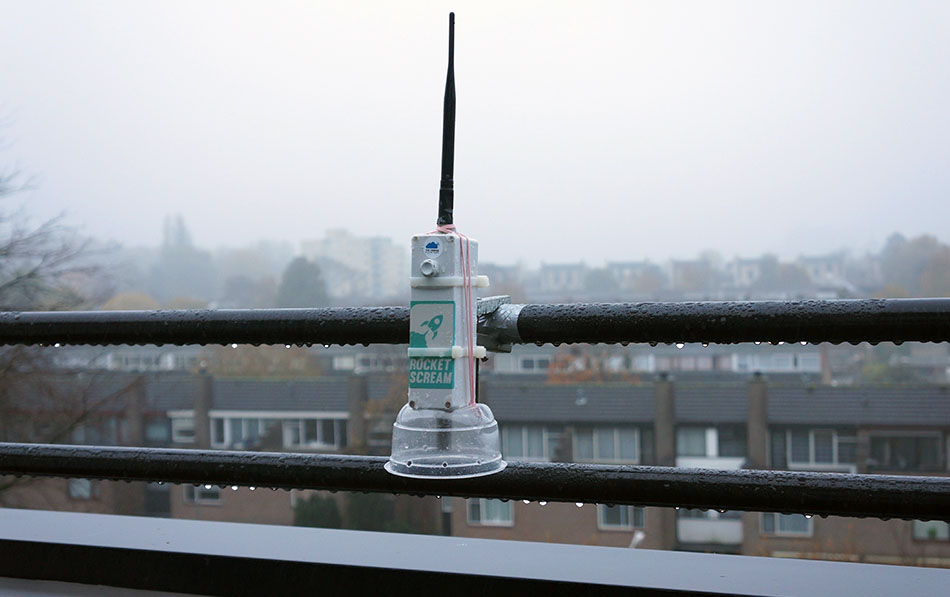could be caffeine overload? 
Maybe disabling brown-out detection (or lowering the bod fuse levels) might help?
Or is it already disabed? This has its risks of course.
brownout levels are not involved here … the MCU gets constant power, there is some ‘dirt’ on the AC line when switching the load on/off and that breaks the uart connection with the pc and don’t come back.
From the photo, it looks like you have a LiPo socket, so I would definitely try it out. I would always try to have either a few hundred microFarads or a LiPo to handle peak current draw caused by WiFi or GSM and it might work well in this case…
Hey borroz. Dit you implement the varistor for peak current handling in your design? The exampe in the link with the fuses has one in the design. Could well be that the coffee maker gives a peak on the ac line.
Greets,
Ewoud
I had a similar problem with bme280 where the reported pressure did permanently stick at about 30% less than the actual value. It somehow got defective.
without switching it off and opening the enclosure I can think of one thing to try … hot air 
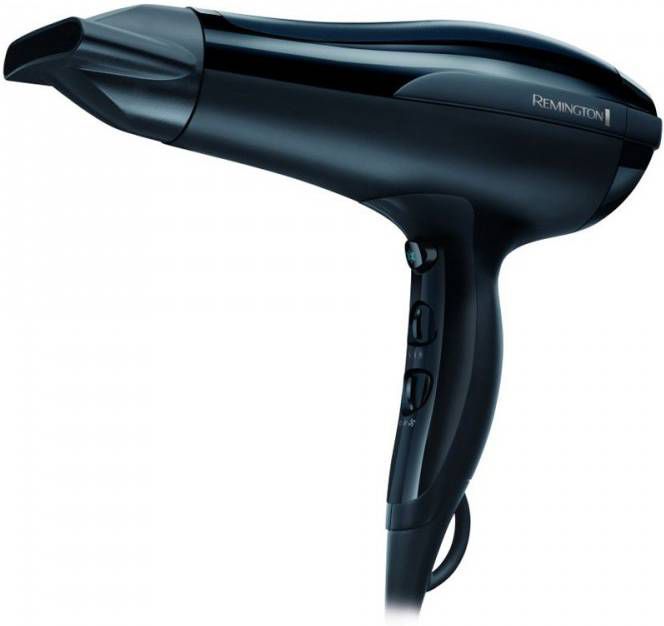
i’ll try tomorrow
the hot air ‘repair’ worked  I think
I think
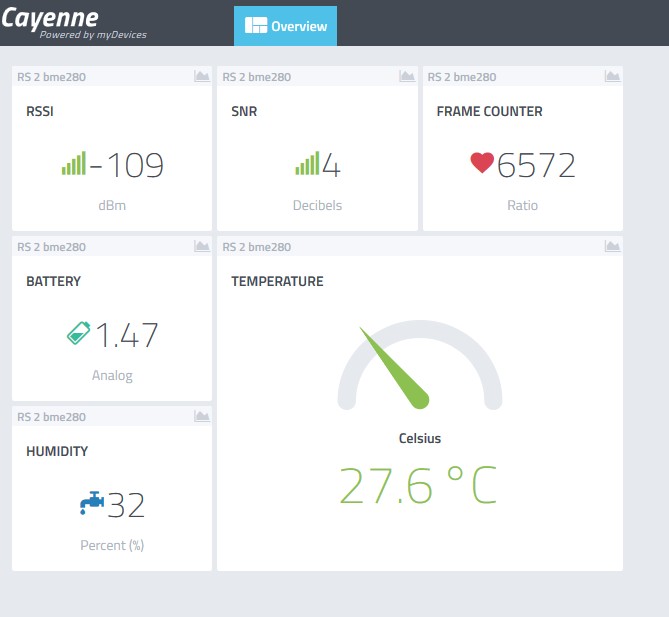
my conclusion : the protective enclosure was accumulating moisture, the node is running now in it’s 4 th week, transmitting 28 bytes @ SF7 every 5 minutes on a single 1.5 v battery
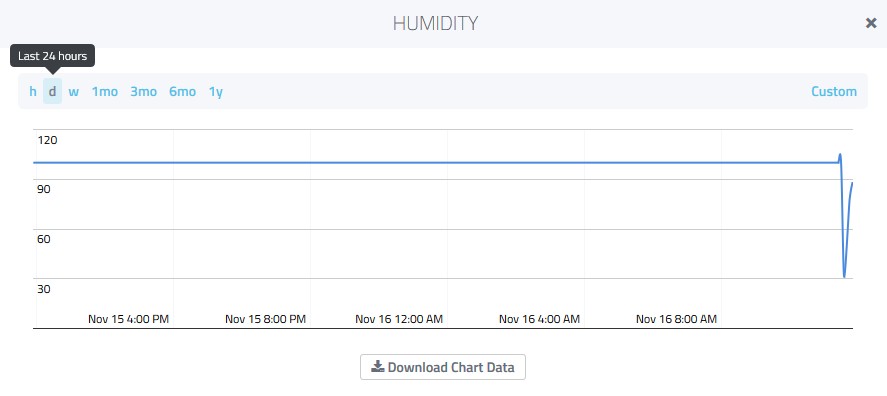
- it’s going up like crazy again, so I don’t know if this BME280 sensor is defect
you got the schematics and code to share ? 
I don’t know if the HW designer, Rocket Scream , will make this open source… at this moment it’s a betatest and the node performs very well (only the BME280 sensor s*cks)
Click to see test code
// -----------------------------------------------------------------------
// TTN OTAA temperature / humidity / battery voltage
// 328P / rn2483 / BME280
// RocketScream-02.2 testnode 1.5 v 5 min public
// BoRRoZ oct 2017
// -----------------------------------------------------------------------
#include <TheThingsNetwork.h>
#include <CayenneLPP.h>
#include <AltSoftSerial.h>
#include "SparkFunBME280.h"
#include "Wire.h"
#include <LowPower.h>
int count = 0;
float temp;
float hum;
float volt;
//float pres;
//float alt;
BME280 bme;
// -----------------------------------------------------------------------
const char *appEui = "0000000000000000";
const char *appKey = "00000000000000000000000000000000";
// -----------------------------------------------------------------------
#define loraSerial Serial
AltSoftSerial debugSerial; // Rx 8 Tx 9
// -----------------------------------------------------------------------
#define SLEEP_PERIOD 300000 // max = 4294967296 - 49.7days
// 1 min = 60000
// 5 min = 300000*
// -----------------------------------------------------------------------
#define freqPlan TTN_FP_EU868
TheThingsNetwork ttn(loraSerial, debugSerial, freqPlan);
CayenneLPP lpp(51);
// -----------------------------------------------------------------------
void setup()
{
bmeSetup();
loraSerial.begin(57600);
debugSerial.begin(9600);
pinMode(2, INPUT); // sleep interrupt
pinMode(4, OUTPUT); // reset rn2483
pinMode(LED_BUILTIN, OUTPUT); // 13
digitalWrite(LED_BUILTIN, HIGH); // LED on = joining
digitalWrite(4, LOW); // reset rn2483
delay(500);
digitalWrite(4, HIGH);
while (!ttn.join(appEui, appKey)) {
delay(10000);
}
//debugSerial.println(F("-- [setup complete]"));
//ttn.showStatus();
digitalWrite(LED_BUILTIN, LOW); // LED off = we OTAA joined yeah
}
// -----------------------------------------------------------------------
void loop()
{
readSENSORS();
//debugInfo();
transmitDATA();
ttn.sleep(SLEEP_PERIOD);
debugSerial.flush();
attachInterrupt (digitalPinToInterrupt(2), awake, LOW);
LowPower.powerDown(SLEEP_FOREVER, ADC_OFF, BOD_OFF);
Wire.begin();
delay(50);
}
// -----------------------------------------------------------------------
void bmeSetup()
{
bme.settings.commInterface = I2C_MODE;
bme.settings.I2CAddress =0x76;
bme.settings.runMode = 0;
// 0, Sleep mode
// 1 or 2, Forced mode
// 3, Normal mode
bme.settings.tStandby = 0;
// 0, 0.5ms
// 1, 62.5ms
// 2, 125ms
// 3, 250ms
// 4, 500ms
// 5, 1000ms
// 6, 10ms
// 7, 20ms
bme.settings.filter = 0;
// 0, filter off
// 1, coefficients = 2
// 2, coefficients = 4
// 3, coefficients = 8
// 4, coefficients = 16
bme.settings.tempOverSample = 1;
// 0, skipped
// 1 through 5, oversampling *1, *2, *4, *8, *16
bme.settings.pressOverSample = 1;
// 0, skipped
// 1 through 5, oversampling *1, *2, *4, *8, *16
bme.settings.humidOverSample = 1;
// 0, skipped
// 1 through 5, oversampling *1, *2, *4, *8, *16
bme.begin();
delay(10);
}
// -----------------------------------------------------------------------
void readSENSORS()
{
rTEMP();
rBATTERY();
}
// -----------------------------------------------------------------------
void rTEMP()
{
bmeForceRead();
temp = bme.readTempC();
hum = bme.readFloatHumidity();
//pres = bme.readFloatPressure() / 100.0F;
//alt = bme.readFloatAltitudeMeters();
}
// -----------------------------------------------------------------------
void bmeForceRead() {
// set the BME280 sensor in "forced mode" to force a reading.
// after the reading the sensor will go back to sleep mode as set before.
uint8_t value = bme.readRegister(BME280_CTRL_MEAS_REG);
value = (value & 0xFC) + 0x01;
bme.writeRegister(BME280_CTRL_MEAS_REG, value);
// Measurement Time (as per BME280 datasheet section 9.1)
// T_max(ms) = 1.25
// + (2.3 * T_oversampling)
// + (2.3 * P_oversampling + 0.575)
// + (2.4 * H_oversampling + 0.575)
// ~ 9.3ms for current settings
delay(10);
}
// -----------------------------------------------------------------------
void rBATTERY()
{
int counter;
int adcReading;
int voltage;
adcReading = analogRead(A6);
adcReading = 0;
for (counter = 10; counter > 0; counter--)
{
adcReading += analogRead(A6);
}
adcReading = adcReading/10;
// convert to volts
volt = adcReading * (3.3 / 1023.0);
}
// -----------------------------------------------------------------------
void debugInfo()
{
debugSerial.println("");
debugSerial.print("BATTERY : ");
debugSerial.print(volt);
debugSerial.println(" v");
debugSerial.print("TEMPERATURE : ");
debugSerial.print(temp);
debugSerial.println(" c");
debugSerial.print("HUMIDITY : ");
debugSerial.print(hum);
debugSerial.println(" %");
//debugSerial.print("PRESSURE : ");
//debugSerial.print(pres);
//debugSerial.println(" mb");
//debugSerial.print("ALTITUDE : ");
//debugSerial.print(alt);
//debugSerial.println(" mtr");
debugSerial.print("PAYLOADS : ");
debugSerial.print(count);
debugSerial.println(" ");
debugSerial.print("-------------------------------[ ");
}
// -----------------------------------------------------------------------
void transmitDATA()
{
lpp.reset();
lpp.addTemperature(1, temp);
lpp.addRelativeHumidity(2, hum);
lpp.addAnalogInput(3, volt);
lpp.addLuminosity(4, count);
//lpp.addBarometricPressure(5, pres);
ttn.sendBytes(lpp.getBuffer(), lpp.getSize());
count++; // update frames transmitted
}
// -----------------------------------------------------------------------
void awake()
{
}
// -----------------------------------------------------------------------
// -----------------------------------------------------------------------
the 1,5 VAA battery from the start (24-10) till now (18-11) :
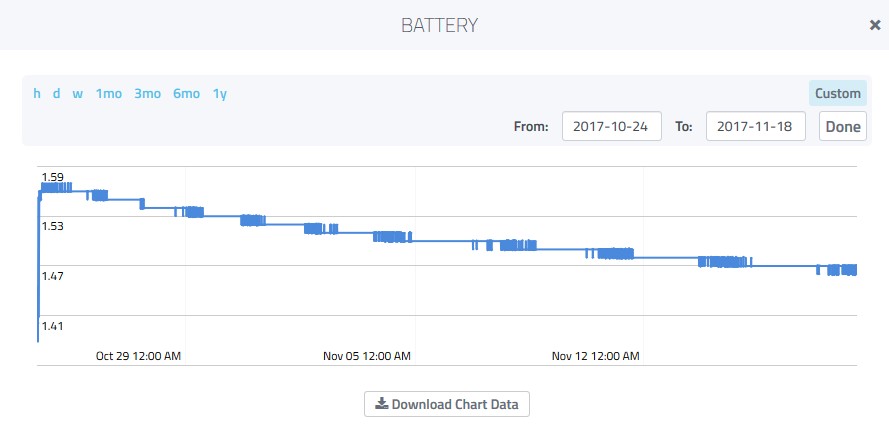
I have heard comments that condensation can build up within the body of the BME280 sensor; not good for a humidity sensor - this came from an engineer who evaluated the Bosch sensors for a global asset tracking solution.
Have you tried the SHT31-DIS from sensirion? This comes with a strong recommendation from the same engineer.
no I didn’t 
I have that sht31 sensor here, have to try that (real I2c !), I tried the SH10 allready but that has no sleepmode, switching the power on/off generates a problem with the I2c bus waking up.
all in all not very happy with the (china) BME280 outdoors @ the moment
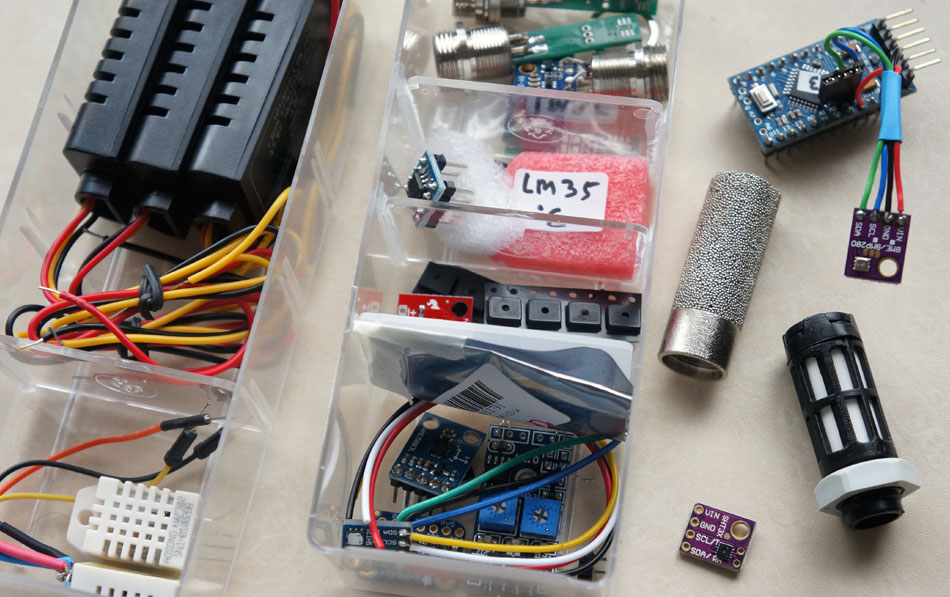
so I haven’t found the right combination of sensor / outdoor construction that is accurate and reliable for a longer period, how do they do it then ?
Hi jezd,
Will be open source once released for public. 
Even better is SHT31-DIS with Membrane Option which protects the sensor from water and dust and allows it to be used under harsh environmental conditions.
(I have not yet seen modules with SHT31-DIS membrane option on AliExpress unfortunately.)
I think the positioning of your BME280 is the biggest issue at this moment (the one positioned at the bottom). That location is error prone.
SHT31-DIS + BMP280 should be a good combination. Using SHT31-DIS for temperature and humidity and use BMP280 for barometric pressure only (not temperature).
SHT31 - https://www.ebay.com/itm/SHT31-SHT31-D-Temperature-Humidity-Sensor-Breakout-Board-Weather-for-Arduino/142466510913
SHT35 - https://www.ebay.com/itm/ClosedCube-SHT35-D-Digital-I2C-Humidity-Temperature-Sensor-Breakout-/182501935370
caps !
https://www.sensirion.com/en/environmental-sensors/humidity-sensors/filter-cap-sf2/
I just ordered two Grove dust sensors for fine particle testing and am hoping to build something to measure pollution (fijnstof) here in Amsterdam. Anyone already working with these?
grove is the connector… what is the sensor type ?
Right…
It’s this one:
tnx for the link btw
